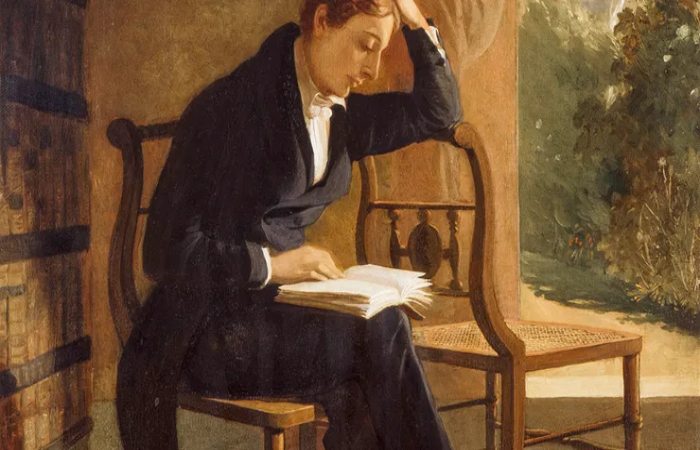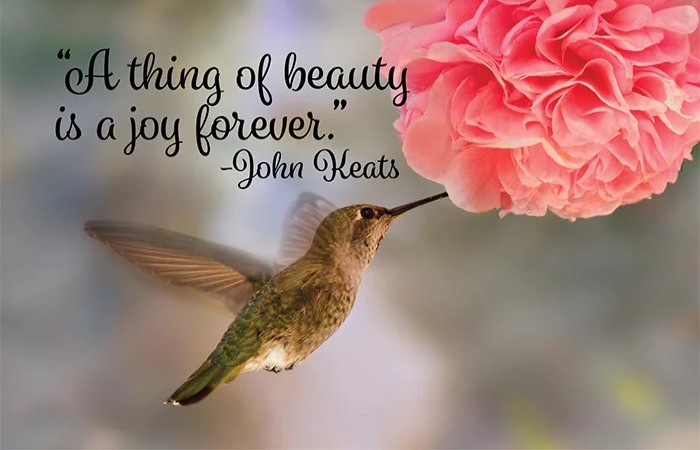Table of Contents
Who is John Keats?
A Thing of Beauty Explanation – John Keats was an English poet who lived during the Romantic period of literature in the early 19th century. He was born in London on October 31, 1795, and died at 25 on February 23, 1821, in Rome, Italy. Despite his short life, Keats significantly impacted English poetry and is considered one of the greatest poets in the English language.
Keats was the son of a stable keeper, and he received a modest education before being apprenticed to a surgeon at the age of 15. However, Keats was strongly inclined towards literature and poetry from an early age. He began writing poetry in his late teens and soon became associated with a group of poets known as the “Cockney School,” which included Leigh Hunt and Percy Bysshe Shelley.
The Poet and His Craft

Keats’ poetry is considered by its vivid imagery, sensuous language, and emotional intensity. He was deeply influenced by classical Greek and Roman literature, as well as by the natural world. Keats often explored themes of beauty, love, mortality, and the transience of human existence.
Some of Keats’ most famous works include his odes, such as “Ode to a Nightingale,” “Ode on a Grecian Urn,” and “Ode to Autumn.” These poems showcase Keats’ ability to create rich, evocative imagery and his contemplation of life’s fleeting nature. Other notable works include his narrative poem “The Eve of St. Agnes,” his sonnet “On First Looking into Chapman’s Homer,” and his unfinished epic poem “Hyperion.”
Despite his talent and contributions to poetry, Keats faced critical hostility and financial struggles during his lifetime. His poems were not widely recognized until after his death. Keats contracted tuberculosis, which was the cause of his declining health and premature death. However, his poetry
A Thing of Beauty Poem Summary

John Keats said that beautiful things leave an indelible mark on our minds. These effects give us peace of mind and joy. Beautiful things are the shade under which we can sleep peacefully and have sweet dreams. They have the power to connect us to the earth. Despite disappointments, frustrations, sad events, and tribulations, beautiful things make our life worth living by giving us hope and enthusiasm.
The poet gives examples of some beautiful things which give us eternal happiness. These are simple things like the sun, moon, different types of trees, etc. According to him, even ordinary things like flocks of sheep, daffodils, water springs, and musk roses growing in a wild forest are beautiful things that give us happiness. , and hilarity. Even the legends of the “mighty” dead count as things of beauty, as they have a similar effect on the human soul.
The poet ends by saying that despite these beautiful things, the beauty of nature is still incomparable. The beauty of nature is like a never-ending fountain that is showering on us from the sky. It is an inexhaustible and endless source of happiness, joy and a priceless gift from heaven.
Beauty Awakens the Soul: Analysis of the Opening Lines
“Beauty Awakens the Soul” is a captivating phrase that sets the tone for an exploration of the profound impact of beauty. Let’s delve into the analysis of the opening lines:
“Oh, beauty! A radiant essence that captivates our souls,”
This line establishes the speaker’s deep admiration and emotional connection to beauty. The exclamation “Oh” conveys a sense of awe and reverence. “Radiant essence” emphasizes the luminous and transformative quality of beauty. The phrase “that captivates our souls” suggests that beauty can profoundly engage and enrapture our innermost being.
“In form and structure, your artistry unfolds.”
This line highlights the idea that beauty is manifest through form and structure. It suggests that beauty is not merely superficial but rather an intricate and deliberate arrangement of elements. By referring to beauty as “artistry,” the speaker acknowledges its creative and intentional nature. Implying that it is not solely a product of chance or luck.
These opening lines lay the foundation for a deeper exploration of beauty and its significance. The emphasis on the soul’s response to beauty and the acknowledgment of its presence in form and structure suggests that the subsequent analysis will touch upon various aspects of beauty and its impact on different realms, such as nature, human form, artistic expression, and emotions.
Finding Deeper Meaning: Interpreting the Poem’s Central Message
At its core, the poem’s central message revolves around the profound impact of visual imagery and its ability to evoke emotions, ignite our imagination, and uncover deeper meanings. The poem invites readers to embark on a journey of exploration and appreciation, emphasizing the transformative power of what we see.
The poem suggests visual imagery goes beyond surface-level observations and deeply engages our senses. It highlights the importance of perceiving the world through our eyes, recognizing the intricate beauty of nature, the human form, and artistic creations.
Moreover, the poem touches upon the connection between visual imagery and human experiences. It emphasizes the significance of moments that transcend words, such as a lover’s intimate gaze or a child’s laughter. These instances reveal that visual imagery has the power to capture the essence of emotions and communicate messages that surpass linguistic boundaries.
Ultimately, the poem encourages us to appreciate the world with our eyes wide open and find inspiration in the visual marvels surrounding us. It reminds us that visual imagery can ignite our imagination and deepen our understanding. And awaken a sense of wonder within us. By delving into the rich tapestry of visual beauty, we can discover profound truths and explore the interconnectedness of life. And perceive the world with renewed clarity and appreciation.
